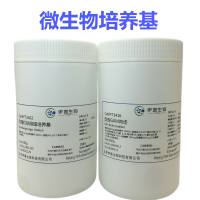Meat-Model System Development for Proteolytic Activity Determination
Many technological parameters that affect the nature and functional properties of proteins are involved in the preparation of meat products. The dry-curing process is quite complex because of the coexistence of enzymes from endogenous and bacterial origins. The protein breakdown that takes place during the ripening of dry fermented sausages leads to an increase in the concentration of peptides and free amino acids (1 ,2 ). The proteolytic events have been thoroughly investigated not only because of their physiological significance but also for their technological connotations in terms of texture and flavor development (3 ,4 ). Lactic acid bacteria and Staphylococcus or Kocuria are used as starter cultures in fermented meat products. In recent years, the proteolytic system of lactobacilli involved in meat fermentation became the focus of an increasing number of studies because of the technological roles of these organisms (5 –7 ). Although results obtained from broth systems show proteolytic activity, studies involving food systems must be done to confirm their effectiveness. A simplified soluble muscle extract to determine the capacity to degrade meat proteins by lactic acid bacteria was developed using a spectrophotometric method (8 ) based on the reaction of the α-amino groups released by hydrolysis with o -phtaldialdehyde and β-mercaptoethanol to form an adduct (1-thioalkyl-2-alkylisoindoles) that is enhanced at basic pH and absorbs strongly at 360 nm.
![预览]()






